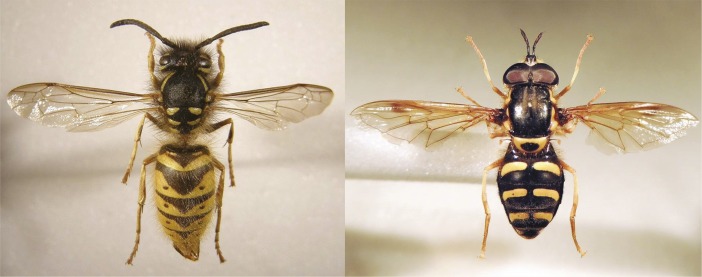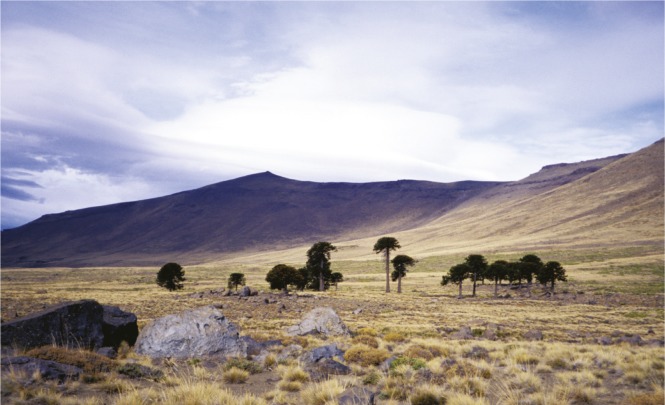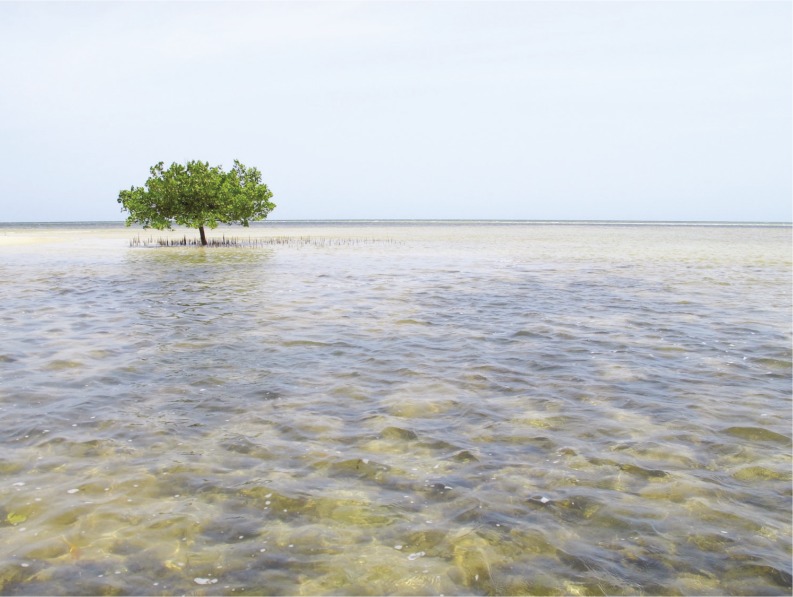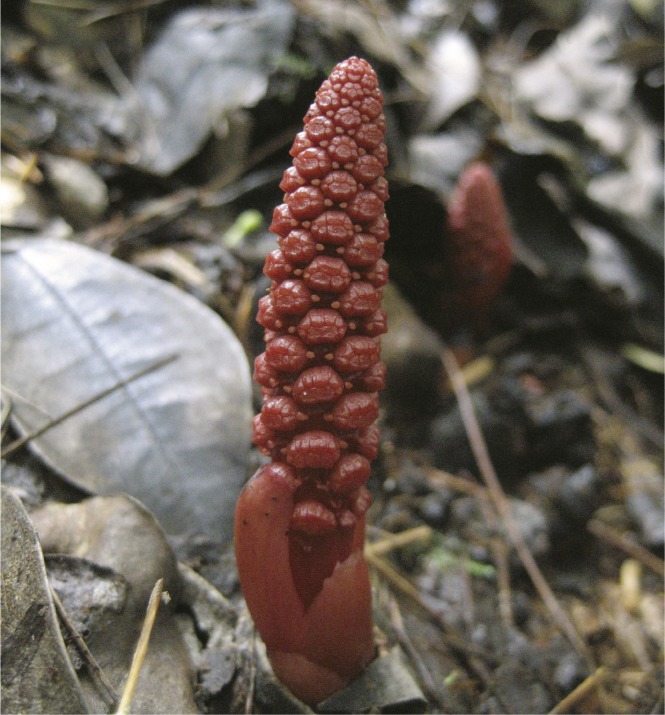Climate change and animal mimicry
Hymenopteran insect (Vespula vulgaris) and Syrphidae mimic (Chrysotoxum festivum). Images courtesy of Steven Falk (photographer).
Batesian mimics are organisms with traits that imitate poisonous or otherwise dangerous prey, allowing the mimics to evade predators. Christopher Hassall et al. (pp. 929–933) report that climate change-associated seasonal shifts, such as earlier springs, affect each player in a Batesian mimicry system differently. The authors focused on hoverflies, insects that visually, acoustically, and behaviorally mimic stinging wasps and bees, thus reducing predation by birds. The authors developed two computational approaches using the human visual system as a proxy for that of birds. In the first experiment, the authors tested the relationships of 42 hoverfly and 56 bee and wasp species by asking study participants to rate the similarity of randomly selected pairs of species. A total of 2,352 possible pairings were tested online more than 30,000 times. Next, the authors identified pairings whose spring emergence had been altered by climate change. To explore the consequences of seasonal shifts, 49 participants played the role of predators in a computer game in which they earned points for “eating” the mimic and lost points for “eating” the bee or wasp. The results indicate that mimics, models, and predators experience different costs and benefits depending on whether the mimics or models appear first or whether they coemerge, according to the authors. — T.H.D.
Loss of small habitats threatens biodiversity
A patch of the endangered monkey puzzle tree (Araucaria araucana) on the Argentine Pampas.
Many conservation and public policy efforts focus on protecting large, connected landscapes rather than isolated patches of vegetation. However, land clearing and degradation pose greater risks to small, isolated patches of habitat than large ones because small habitats are often considered to have lower conservation value. Brendan Wintle et al. (pp. 909–914) report that isolated habitat patches less than 1,000 hectares in size have high conservation value and are crucial to the survival of terrestrial species unique to those patches. The authors analyzed the results of 31 conservation studies across 27 countries in Africa, Australia, Europe, and North America. Each study used species distribution maps and a software program that identifies land conservation value. Areas with high conservation value tended to be isolated habitat patches and embedded in agricultural or urban environments. Conservation value was generally lower in large and mostly intact habitats because those areas tended to harbor species that were common throughout the landscape. According to the authors, the study underscores the significance of protecting small habitat patches, which may host rare or threatened species. — M.S.
Global mangrove dispersal patterns
Mangroves.
Mangroves—trees or shrubs that grow in salt water along tropical and subtropical shorelines—are ecologically and socioeconomically valuable. Mangroves are also highly susceptible to climate-driven sea level rise. Buoyant mangrove seeds and fruits, called propagules, disperse via ocean currents, providing a mechanism for range shifts in response to climate change, but the spatial scale of such dispersal is unknown. Tom Van der Stocken, Dustin Carroll, et al. (pp. 915–922) used a high-resolution ocean current model to simulate global propagule trajectories over a period of 1 year. Dispersal frequently occurred along the coasts, with no dispersal observed between opposite sides of the African or American continents. The authors calculated the degree of connectivity between various regions as the probability of a propagule released from one region taking root in a different region. The authors found significant connectivity between the Tropical East Pacific and the Galapagos Islands, which were in turn connected with Central Polynesia, suggesting that archipelagos could act as stepping stones for trans-Pacific dispersal. The authors also observed direct and reciprocal connectivity between opposite sides of the Indian Ocean. The effective dispersal distance was highly sensitive to the time that viable propagules spent floating. According to the authors, the results illuminate present mangrove distributions and possible response to climate change. — B.D.
Economic climate feedbacks
Rising temperatures and atmospheric carbon dioxide levels can lead to natural climate feedback cycles such as impairment of carbon dioxide absorption by oceans with increasing temperatures, resulting in nonlinear rates of warming. Such climate change drivers can also affect economic feedback cycles in which the effects of climate change, such as natural disasters, can slow economic activity and reduce societies’ greenhouse gas emissions. The balance between the two feedback cycles, natural and economic, is not well understood. Dawn Woodard et al. (pp. 759–764) modeled natural and economic warming trends under a range of future scenarios. Under a high-warming scenario, climate-driven losses in economic activity by 2100 decreased fossil fuel emissions by 13%, reducing atmospheric carbon dioxide by more than 100 parts per million. However, the natural feedbacks over the same period increased atmospheric carbon dioxide by a similar amount, offsetting the economic climate gains. According to the authors, the results suggest that climate-related decreases in economic activity can offset natural warming feedbacks, but may increase inequality, disproportionately affect vulnerable populations, and reduce resources available to nations to mitigate climate change effects. — P.G.
Computational analysis could aid targeted HIV treatment
3D structure of HIV-infected (blue, green) and uninfected (brown, purple) T cells interacting. Image courtesy of Flickr/NIH Image Gallery.
Human leukocyte antigen (HLA) class I proteins present processed HIV-1 peptides to the immune system to trigger an immune response against the virus. Previous studies have found that genetic polymorphisms in HLA molecules at five specific amino acid residues can explain around 12.3% of the variation in viral load observed among HIV-infected people. Jatin Arora et al. (pp. 944–949) developed a computational approach to identify disease-associated HIV-1 peptides for individual patients. The authors used algorithms to determine which HIV-1 peptides are likely to bind a given patient’s HLA variants. Using HLA genotype and viral load data from 6,311 HIV-infected individuals of European ancestry, the authors determined whether such binding is associated with the patients’ viral load. Peptides predicted to be associated with disease accounted for 12.2% of the variation in viral load, closely comporting with previous findings and demonstrating the robustness of the approach. More importantly, in addition to known disease-linked peptides, the analysis yielded several novel disease-associated HIV-1 peptides, including an underappreciated role for peptides derived from Env, a viral envelope protein. According to the authors, the findings identify patient-specific peptides tied to HIV control and could aid the development of targeted treatment approaches. — P.N.
Nontraditional genetic code in parasitic plant
Male inflorescence of Balanophora laxiflora.
Parasitic plants that do not photosynthesize derive nutrients by forming vascular connections with host plants. Such parasitic plants harbor nonphotosynthetic plastids, which normally perform photosynthesis in land plants and contain their own genomes, but little is known about the plastid genomes of extreme parasitic plants. Huei-Jiun Su et al. (pp. 934–943) sequenced and analyzed the plastid genomes of two species of Balanophora, a fully parasitic mushroom-like plant that produces some of the smallest known flowers. The pair of plastid genomes, around 15.5 kb in size and harboring 19 putatively functional genes, are among the smallest and most compact plastid genomes documented. Both genomes consist largely of adenine (A) and thymine (T) nucleotides, carrying more than 87% AT content. The authors discovered a novel genetic code in the Balanophora plastids: the triplet codon TAG, which functions as a stop codon during protein synthesis in the canonical code, is reassigned to encode the amino acid tryptophan. Moreover, 14 of the 19 genes in Balanophora plastids are devoted to protein synthesis, despite the loss of all plastid transfer RNA genes for protein synthesis, suggesting that the parasites import the transfer RNAs from the cytosol, with the corresponding genes residing in the Balanophora nucleus or mitochondrion. According to the authors, the findings pave the way for studies of radical genome evolution. — P.N.







